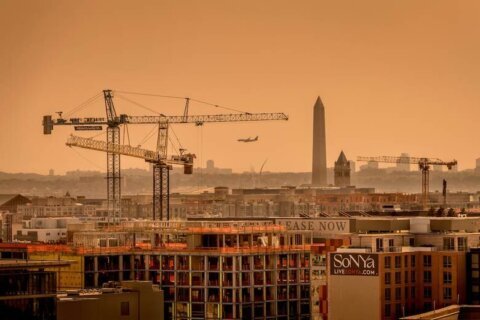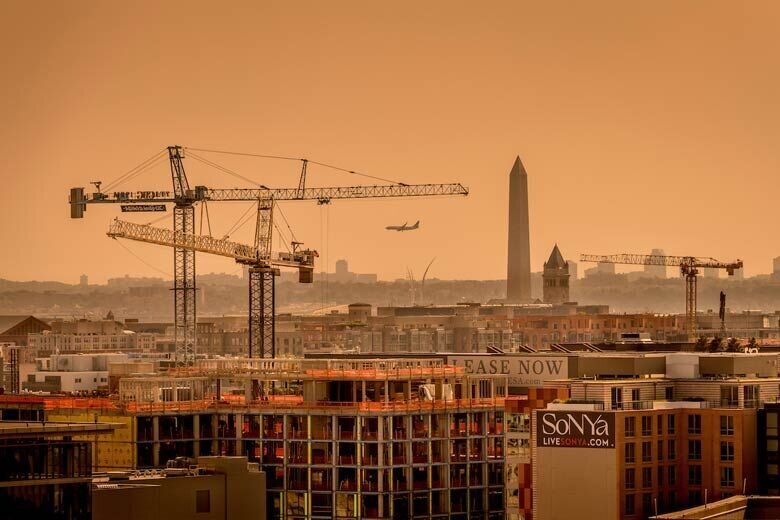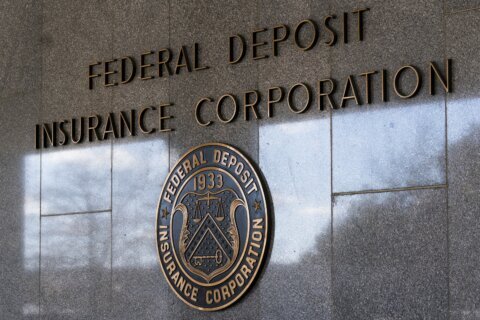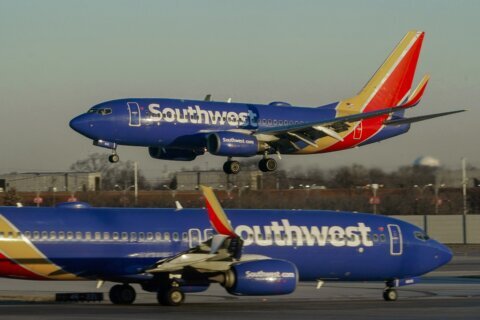
The 35-square-block area of Northeast D.C. known as NoMa has led the U.S. in new apartment construction (by ZIP code) over the past five years, with nearly 7,400 new apartments delivered.
The neighborhood includes ZIP code 20002 — the Union Market area — which has had a 72% increase in new apartment construction since 2017.
What happened that caused this increase?
The view on an Amtrak train out of Union Station is now lined with new glass, steel and brick apartment buildings and condos (26 newly-constructed buildings at last count). You may also see cranes and banners inviting future residents to scan a QR code and find more information about living in dwellings that will soon be for sale or for rent.
There are also all the new or repurposed office buildings.
It is a remarkable development of an area of Northeast D.C. that 25 years ago was mostly gritty industrial buildings, warehouses and empty lots closed off by chain-link fences north of the train station.
What’s in a name?
NoMa may be just a New York reference to neighborhoods, such as SoHo. Most D.C. neighborhood names have a historical reference, but NoMa was fabricated.
But the birth of NoMa goes back to city planners more than two decades ago — with a specific purpose.
“In the late-90s, a report that gave recommendations for D.C.’s economic resurgence identified the area North of Massachusetts Avenue as a key area of opportunity,” said Maura Brophy, president and CEO of the NoMa Business Improvement District. “The vision was to develop NoMa as a mixed-use technology, media, arts and residential district — and that has now happened.”
Technically, any neighborhood north of Massachusetts Avenue and running through the District for 8.5 miles could have been named NoMa. It is the longest state-named avenue in the city. However, most if not all of those neighborhoods north of Massachusetts Avenue have names. So, NoMa it would be.
The name became the neighborhood’s officially accepted moniker when the Red Line Metro station near Florida Avenue Northeast was renamed NoMa-Gallaudet U station in 2011.
More than 13,000 people now live in NoMa, and it draws more than 50,000 workers daily. Over the past 20 years, more than 12.5 million square feet of office space has been constructed.
There’s a saying in the real estate world that “retail follows roofs,” and that has been the case in NoMa.
There are now seven hotels in NoMa, along with more than 50 retailers, restaurants and bars — including a Harris Teeter grocery store.
“We have a diverse mix of retailers that hits many different price points when it comes to goods and services and restaurants, including upscale offerings and fast-casual,” Brophy said.
Starr Restaurant Group (Le Diplomate, St. Anselm) opened its newest concept, El Presidente, in September. Ted’s Bulletin will open an outpost in NoMa next year.
The Metropolitan Branch Trail runs through NoMa, attracting bikers and runners. The area regularly hosts events, including concerts. It has its own farmers market. The NoMa BID’s Gateways Project is using public art to create a visual identify for the neighborhood, much of it focused on its history.
There’s an interesting art installation under the M Street Northeast overpass called “Rain,” with thousands of LED lights that pulse to the traffic flow above.
NoMa has several parks, including two dog parks. Playful Pack, a dog day care center, has signed a lease for a NoMa location.
NoMa also has a place in music history.
One of the most prominent existing buildings in NoMa is the former Washington Coliseum sports and concert venue. Built in 1941, the oval structure is now home to sporting goods company REI, other retailers and offices. The NoMa Business Improvement District moving its headquarters there next month.
The Beatles performed their first U.S. concert there in 1964, two days after the “Fab Four’s” American debut on “The Ed Sullivan Show,” launching what became “Beatlemania” in the U.S.









